The mountain appears out of nowhere. The flat lands on the far west side of the Tararua Range have done nothing to indicate its presence. As we drive along the coast the foot of the mountain is obscured in cloud. But there, rising two and a half kilometres above the plains, is the summit. Black and still flecked with patches of snow even in the summer, it is Mount Taranaki. Tomorrow we make our ascent.
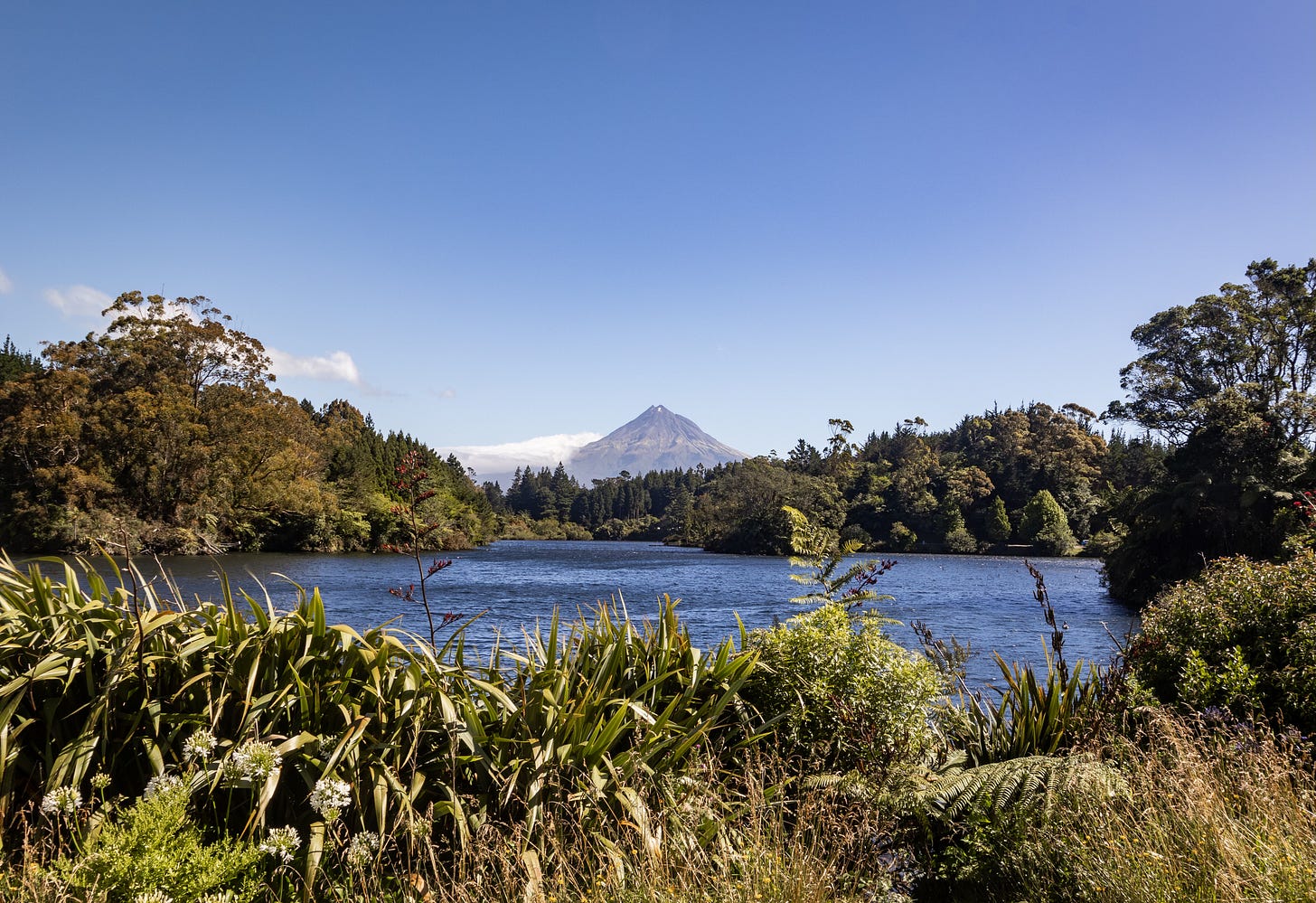
The drive into Egmont National Park (Te Papakura o Taranaki) is a spectacular one for its difference to almost every other National Park I’ve been to. Usually, a drive in to, say, the Lake District, or Australia’s Blue Mountains, would be met with panoramic vistas, morning light striking the flanks of mountains, here, though, the entrance is hemmed in tightly. Along the roadside - after the obligatory stop at the National Park sign - a very Tolkeinesque forest closes in. I can see no deeper than a few metres into the green as we drive, winding and slowly upwards, the mountain now completely out of view. The only space where the forest hasn’t claimed, it seems, is at the trailhead where a small visitor centre and an already full car park (pre-7am) sit conspicuously under the mountain’s watch.
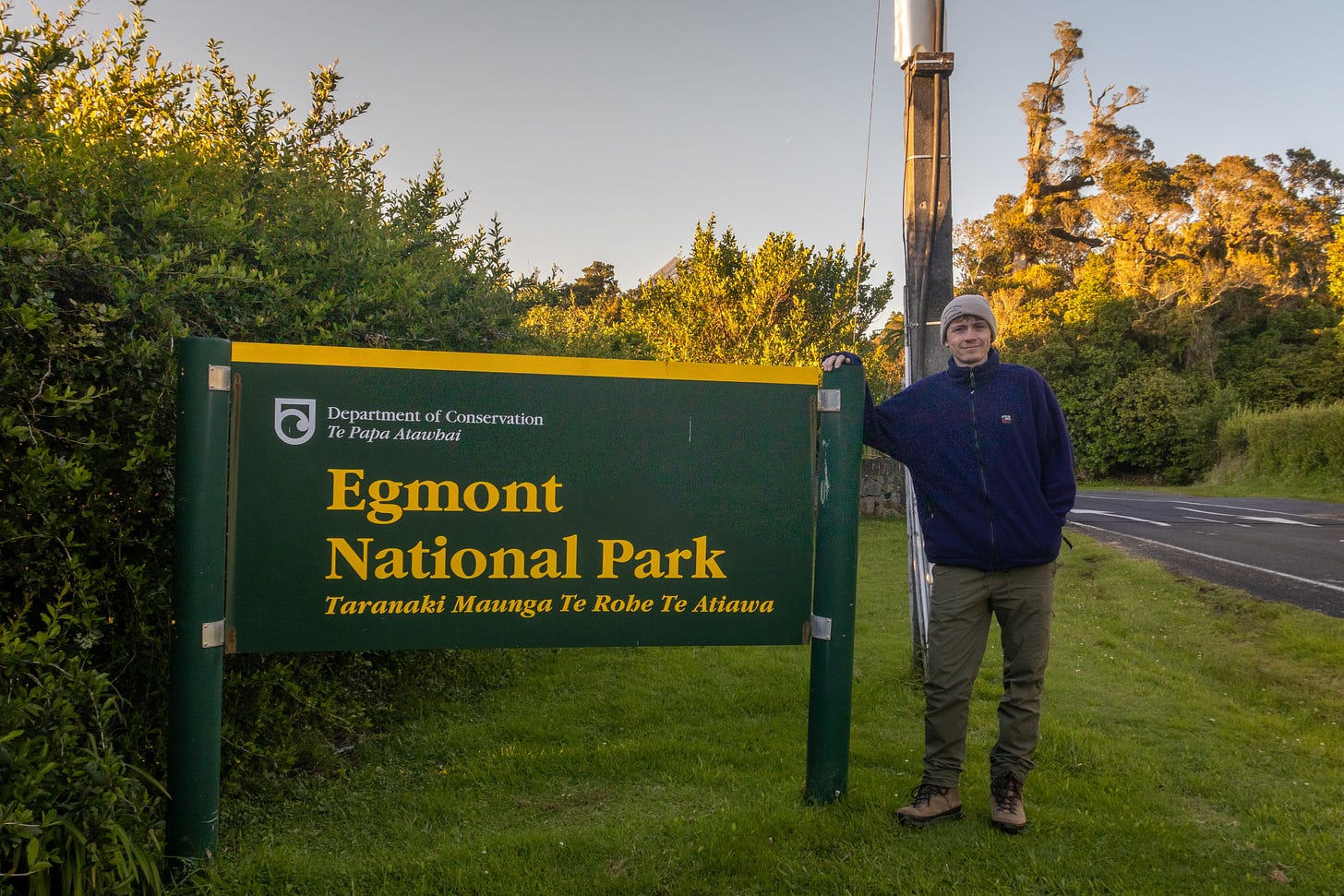
It’s cool and only moderately windy as we begin the ascent, first marked by pleasantly sloping boardwalks and surrounded by twice-head-height grasses beginning to seed in straw yellow. Now in thinner forest, the mountain can be seen. He looks menacing, and in truth I can’t see any feasible way up his flanks, the almost perfect conical shape looks simply unconquerable. It may be a little strange to refer to a mountain as “he” or “him”, much how ships often - if not always - take “she” or “her”. But a dive into Māori pūrākau (mythology, legends) can explain this.
Mount Taranaki sits very much alone. Take a map of Aotearoa New Zealand’s North Island and you will see a long group of mountain ranges stretching from Wellington in the south to the East Cape way up in the northeast-most corner. Then look again to the west and a large green circle will appear, centred around a white spot. Mount Taranaki’s lonesome summit.
In those Māori legends, Taranaki and Tongariro - another huge mountain at the heart of the North Island - once sat beside each other and even both fell for the female mountain Pīhanga. In the throes of their affection, Taranaki and Tongariro fought over her, and despite his smaller height, Tongariro ended up victorious. Taranaki, then, was banished from the island’s heart, and hanging his head he eventually settled more than 200 kilometres away in this lonely corner, carving out the Whanganui River as he went for good measure.
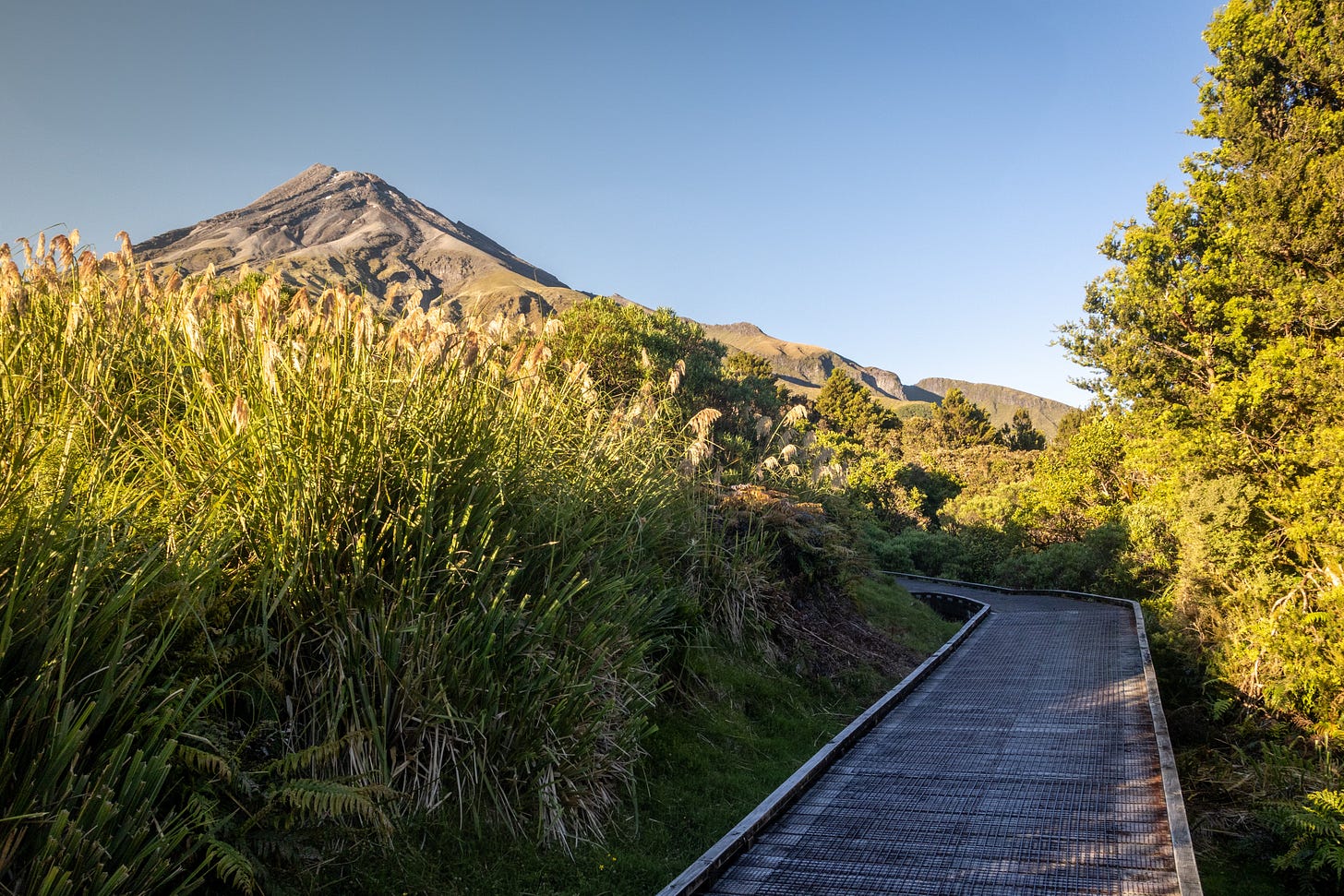
It’s quite a sad story really, and takes a little of the edge off his intimidating character. But still. There’s a mountain to climb.
Once the boardwalks end, the trekking begins. The track is no steady incline, rather a fair few ups and downs at the beginning, but still comfortably sheltered from the wind by the dying remnants of the foothill forests. The going gets tough though, as with a most hikes, when concrete gets involved. A long, steep hill, I’m sure concreted for convenience, quickly becomes a drain on both sole and soul. Rutted and unforgiving, I have to rely on my walking poles to help me along the way and, in truth, climbing the mountain proper hasn’t yet started.
A few kilometres along the track, sore and tired from the concrete uphill but awed by the view clean through to Tongariro, Ruapehu and Ngauruhoe, we come to the Tahurangi Hut, one of many on the mountainside available first-come-first-serve for sunrise chasers and sunset seekers to spend a little longer up here in the gods. For us it’s spot to stretch the ankles and get a little necessary shade as the sun powers up for the day. Though I’m thankful for the passing of the tarmac, what’s more concerning is that the track beyond the hut seems to disappear altogether.
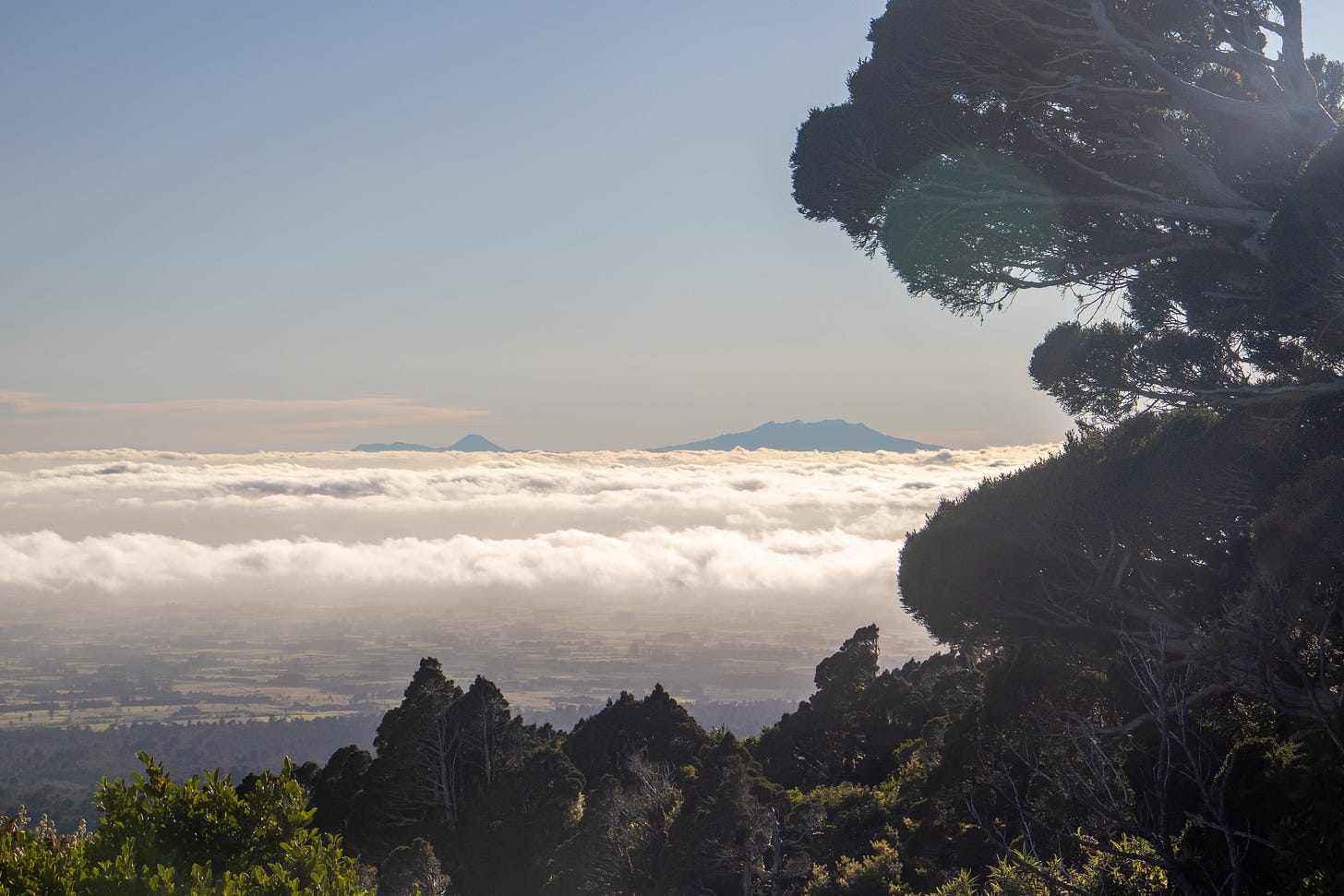
A small valley of black boulders is the next obstacle to work through on the way to the summit. This is where the set route ends for now. Among the mess of rocks are snow poles, rusted and topped with fluorescent orange to mark them out. We pick our way through the valley with aching knees until the track reappears. “You’ll be begging for stairs soon,” says a passing, early-bird hiker on his way down with a chuckle. The track over this section has now become a tiring wooden staircase and not a little precarious at times. I laugh off his statement as a worry enters my mind and the wind picks up, wrapping around the eastern face. I have read about what comes next, but can it really be that bad?
As luck would have it, it can.
Even with my burning joints after the stairs, my brain is screaming for them to come back as we enter the scree. The angle of ascent feels close to the vertical, and each time I take two steps up, I slide back one and a half. At times I feel like I could slip straight off the mountain and all the way into the sea. The thin layer of pumice and centuries of ash struggle to take my weight and that of the slipping climbers above me, of which tens are now desperately scrambling up the slope. The wind picks up more, sending devils of gravel and dust across the scree slope and straight into my eyes. With the poles out, progress is slow but constant. But there is little room for rest even once the scree is over.
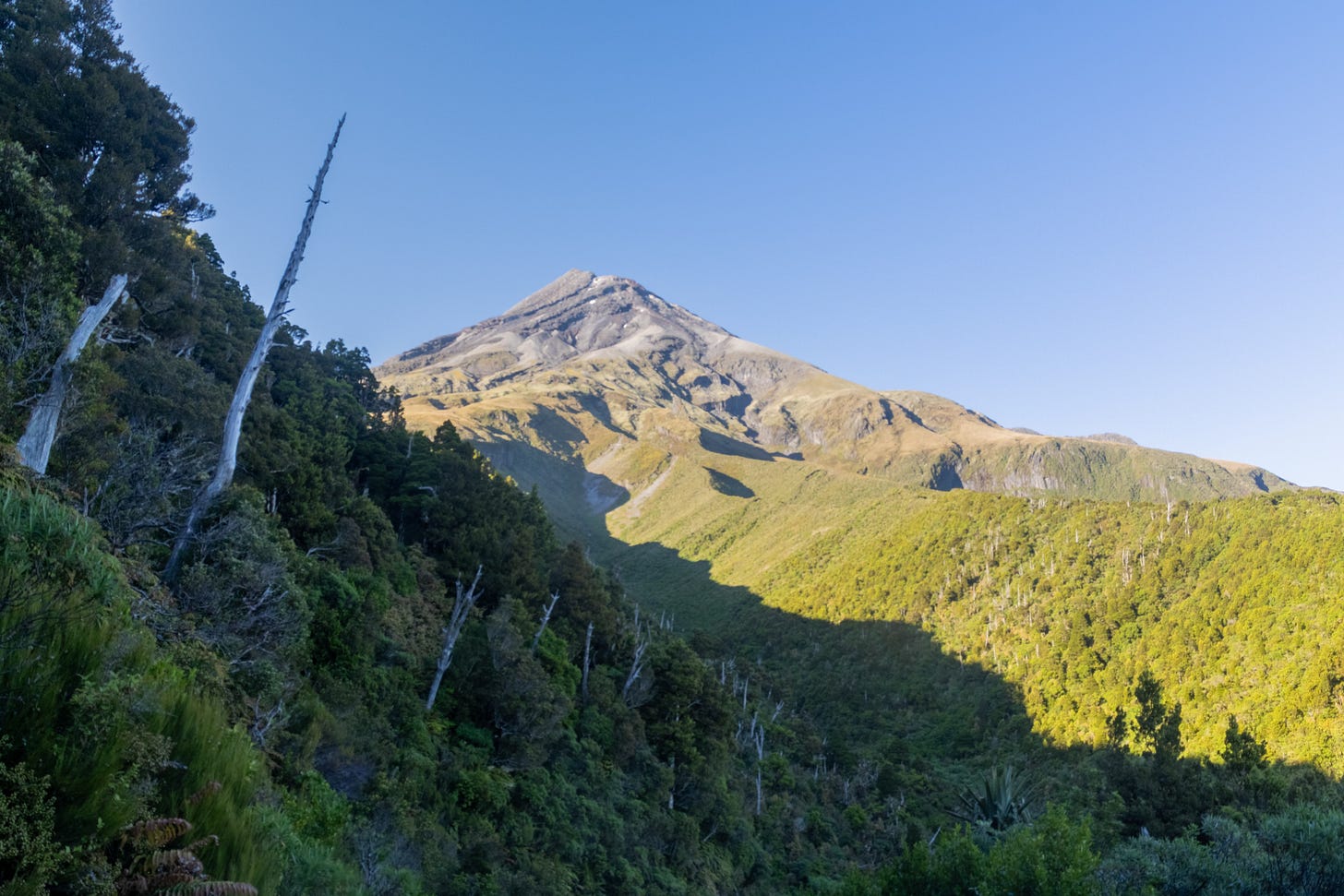
Another rock garden appears near the summit, this one steeper and longer than the last. Now above the snow-line, it’s a task of zig-zagging and another killer for the quads and knees all culminating in a narrow pass with a hair-raising drop on the right-hand side. This is it. The final leg of all that climbing. A way into the crater.
For the climb so far I have forgotten just what kind of mountain Taranaki is. Of course. It’s a volcano! Dormant but not extinct and, to be honest, I’m a little unnerved as I stand in the crater. Surrounded on all sides by a rim of tooth-like ridges, I’ve entered the maw. The wind here is battering. Gale-force. So strong is it that it makes it difficult to even stand up, and coupled with a fairly deadly final summit slope, progress - after donning a warm coat and gloves - is completely halted. This is as far as we will go. Like many mountains in Aotearoa New Zealand, the very summit of Taranaki is considered tapu (sacred). It isn’t for me to climb and just thirty metres shy of the summit, for safety and respect, we turn around.
After taking a moment to breathe in the chilly view all the way from maunga (mountain) to moana (sea), it’s time to head back down.
Mostly on my bottom.




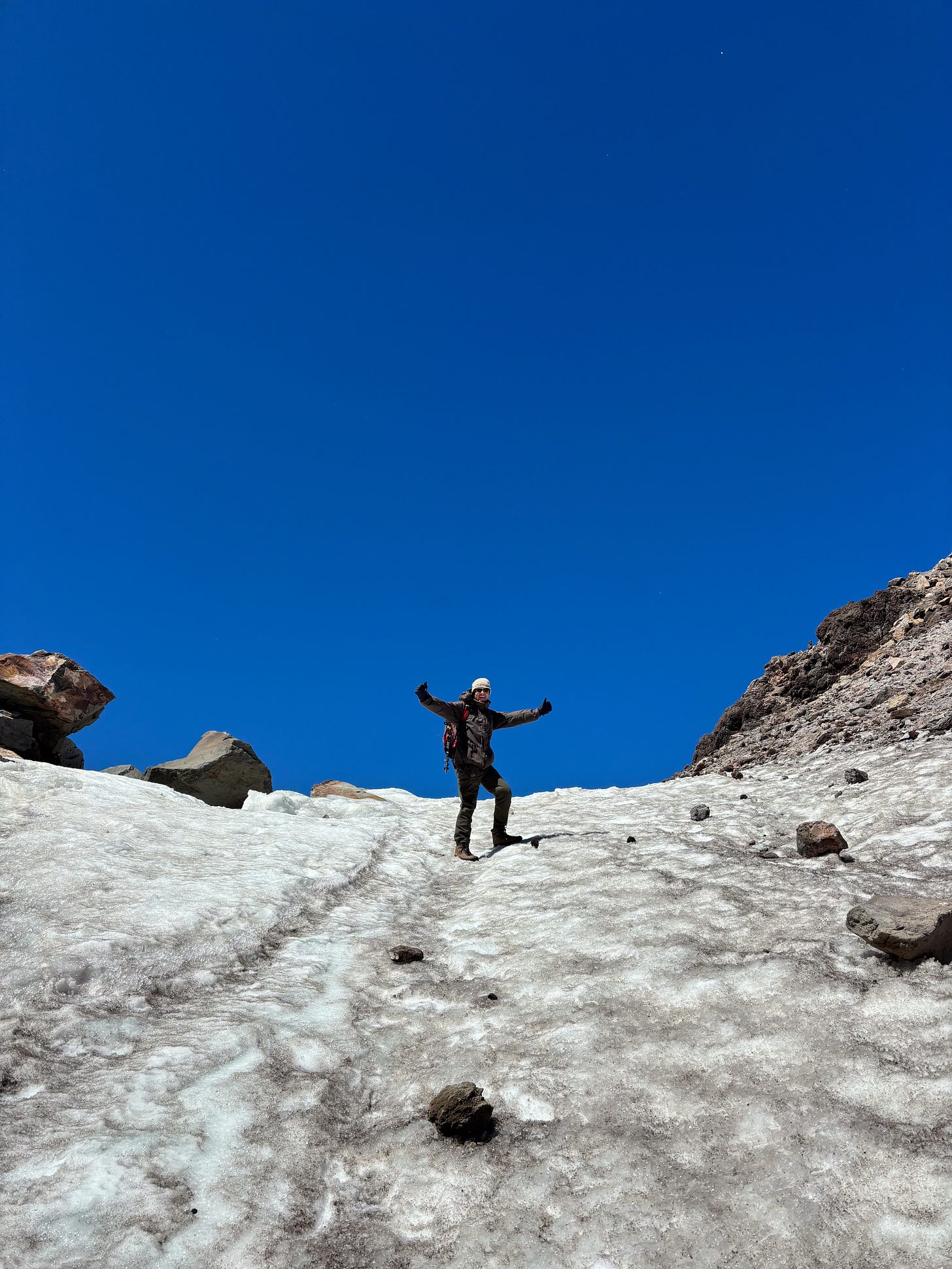
Love it Matt!